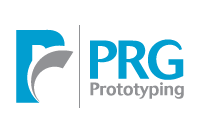Additive manufacturing, a term commonly used to describe industrial scale 3D printing, is the technique of creating a product by combining multiple layers of a thermoplastic material. The applications of additive manufacturing are virtually limitless—nearly anything that can be rendered using 3D modeling can be produced using additive manufacturing technologies. To date, this process has been adopted by a broad spectrum of industries including the medical, robotics, computing, automotive, construction, and fashion fields.
Additive manufacturing has become a valuable asset also in the world of prototyping owing to its ability to quickly and affordably craft a functional 3D representation of a product concept. This technology enables creators to test product functionality—for example, the ability for parts to interlock, fasten, or snap—as well as to evaluate product features such as the amount of stress a part can take, the durability of a given material, the functionality of microscale features, and physical dimensions. In other words, additive manufacturing provides companies the opportunity to experiment with and inspect the fine details of a given product in a more time- and cost-efficient manner than older techniques such as product prototype machining, injection molding, and casting allow.
The PRG Additive Manufacturing Process
Additive manufacturing is a multi-step process designed to take you from concept to finished product in a short amount of time. The first step in the process is transforming an idea into a model, which is created using computer-aided design (CAD) technology. Next, the CAD model is converted into a file format known as STL, which is short for stereolithography. STL is the format utilized by computer-aided manufacturing to produce a material version of your design. The STL-formatted design is converted into “slices,” which comprise the layers used to create the finished product. The modeling equipment converts each of these “slices” into the thermoplastic layers that will be combined to form the final product. Once completed, the model is removed from the equipment and subjected to cleaning and any other steps—such as sanding and painting—required before being presented to the client.
Additive manufacturing can be employed to create almost anything, from simple 3D objects large and small to highly complex designs that incorporate multiple moving parts. And because this method is both time-efficient and cost-effective, one can experiment with his or her design until the perfect product is realized without sacrificing the time and money required by older prototyping techniques.
Additive Manufacturing Brings Your Concept to Life
Additive manufacturing has myriad benefits for all types of creators, be they individual inventors, entrepreneurs, or start-up companies facing fierce competition. The process produces a tangible product that is both strong and durable, utilizing layers as slim as .04 mm. By enabling you to bring your product to life before entering the stage of full-scale production, this process provides a highly valuable opportunity to test every conceivable aspect of your design—and catch every potential mistake—before it’s too late. If you’re a product creator who dreams of transforming your concept into a reality—that is, of looking upon your design as it translates into a physical model—rapid prototyping might be the solution for you. After all, if a picture is worth 1,000 words, a prototype is worth at least 10,000.
A rapid prototyping firm dedicated to the design and construction of new products, PRG Prototyping specializes in concept design engineering, design for manufacturability, prototype development, production, and marketing presentations. We also provide information on patent protection and intellectual property services. If you would like to learn more about how additive manufacturing and rapid prototyping can help to make your concept a reality, contact us.

